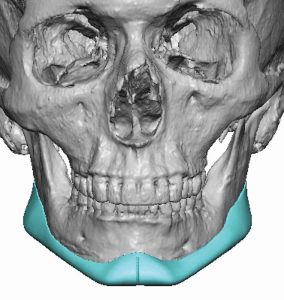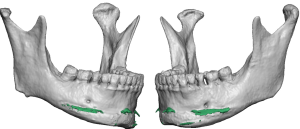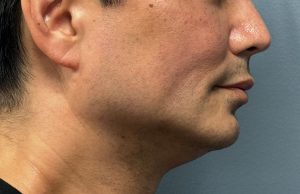Background: The chin is the most commonly treated aesthetic facial augmentation area for which a wide variety of implants exist to perform it. All but one of these implant styles provides a horizontal augmentation effect only. While they can be positioned a bit lower on the chin bone to create some vertical lengthening effect they can not do so in any significant amount without having the wings of the implant being malpositioned. This is the purpose of the vertical lengthening chin implant style.
The jaw angles are historically the least common area of aesthetic facial augmentation but that is changing in contemporary times as more patients now request it. It has fewer implant styles and all but one exclusively create width or lateral horizontal augmentation. Only one jaw angle implant is deliberately designed to drop down the jaw angles, the vertical lengthening style.
When aesthetically augmenting the chin and jawline the most under diagosed dimensional need is vertical. This is actually easy to understand why as what treatments are available (standard implant styles) usually dictate what the surgeon ‘sees’. Or even the need for vertical elongation is recognized the surgeon often tries to make standard implants work to treat it.
But of all lower facial vertical deficiencies the most common is the flat mandibular plane angle. With a flat mandibular plane angle the chin is the primary vertical deficiency. There may be a horizontal chin deficiency but no form of jaw augmentation will look right if the overall vertical length of the chin is not addressed.

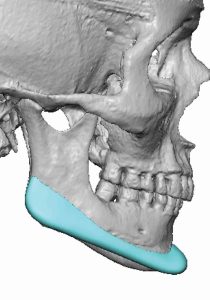
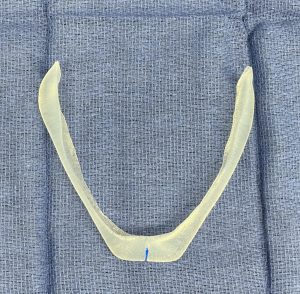



Key Points:
1) The most under diagnosed chin/jaw deficiency is in the vertical dimension.
2) A flat mandibular plane angle is one of the clinical signs of a vertically short lower jaw.
3) Only a custom implant design can either partially or fully elongate the entire lower jawline.
Dr. Barry Eppley
World-Renowned Plastic Surgeon





